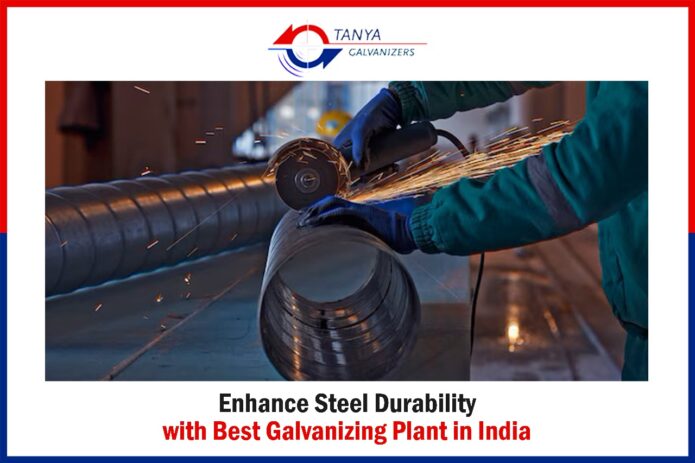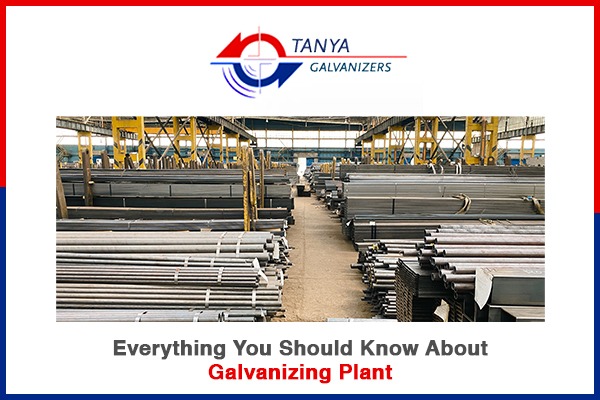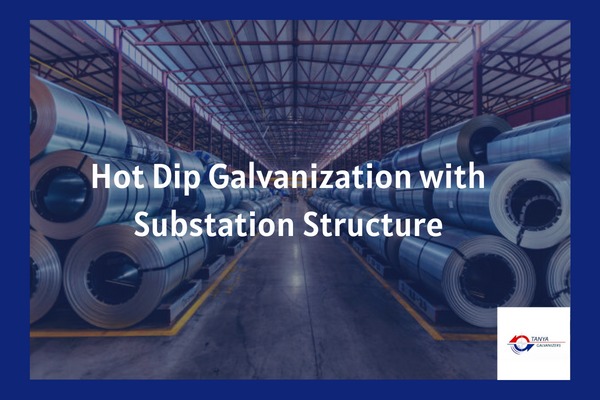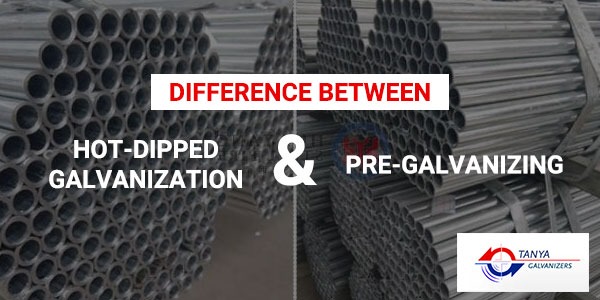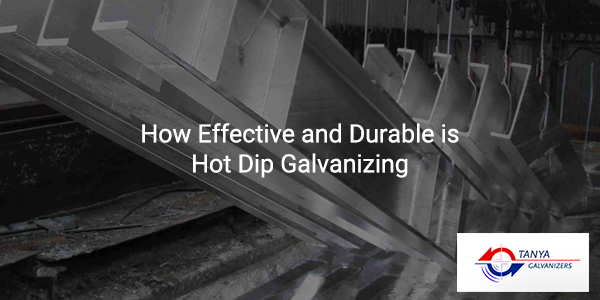In industries where steel plays a central role, corrosion protection is not optional—it’s essential. Whether in construction, energy, agriculture, or infrastructure, ensuring your steel lasts long without rusting saves both time and cost. That’s where a galvanizing plant comes in. Specifically, a Hot Dip Galvanizing Plant in India like Tanya Galvanizers provides robust, reliable, and economical corrosion protection using advanced hot-dip galvanizing techniques.
How Does a Hot Dip Galvanizing Plant Work?
At a modern Hot Dip Galvanizing Plant in India, like Tanya Galvanizers, the process follows internationally accepted quality standards. Here’s a simple breakdown:
1. Surface Preparation
- Degreasing: Removes oil, grease, and dirt.
- Pickling: Removes rust and mill scale using acid solutions.
- Rinsing: Washes off chemical residues.
- Fluxing: Prepares the surface for better zinc adhesion.
2. Galvanizing
- Steel is dipped into molten zinc heated to around 450°C.
- A zinc-iron alloy layer forms, bonding tightly with the steel.
3. Cooling and Inspection
- Coated steel is cooled in water or air.
- Each piece is checked for coating thickness, uniformity, and defects.
Advantages of a Hot Dip Galvanizing Plant
Hot dip galvanizing offers several unique advantages:
- ✅ Long-Lasting Protection: Coatings can last 30–70 years depending on the environment.
- ✅ Low Maintenance: No need for regular repainting or touch-ups.
- ✅ Full Surface Coverage: Even hard-to-reach areas are coated.
- ✅ Environmentally Friendly: Zinc is non-toxic and recyclable.
- ✅ Cost-Effective: Low lifecycle costs with minimal maintenance needs.
Why Tanya Galvanizers is a Leading Hot Dip Galvanizing Plant in India
Tanya Galvanizers has earned its place as one of the top-rated hot dip galvanizing plants in India through a strong commitment to quality, innovation, and customer satisfaction. Here’s what sets them apart:
- 🌐 State-of-the-Art Infrastructure
- 🛠️ Skilled and Trained Technicians
- 📈 Strict Quality Control Measures
- 🔄 Customizable Galvanizing Solutions for Multiple Industries
- 🧪 Eco-Friendly and Safe Processing
Whether you are in power transmission, automotive, construction, or infrastructure, Tanya Galvanizers offers galvanizing solutions tailored to your product and industry requirements.
Applications of Galvanized Steel Products
Galvanized products from a reliable galvanizing plant are widely used in:
- Transmission Towers & Poles
- Crash Barriers & Guardrails
- Pipelines & Water Tanks
- Solar Panel Mounting Structures
- Structural Steel for Buildings and Bridges
Why Quality Matters in Galvanizing
Using a substandard galvanizing process can lead to:
- Uneven coatings
- Reduced corrosion resistance
- Shorter product lifespan
Choosing a certified and technologically advanced Hot Dip Galvanizing Plant in India, like Tanya Galvanizers, ensures consistent, durable, and compliant results.
Trusted Galvanizing Solutions for Every Industry
Ready to protect your steel investments? Tanya Galvanizers is your go-to Hot Dip Galvanizing Plant in India, offering exceptional quality, timely service, and reliable performance. Whether it’s structural steel, cable trays, earthing materials, or industrial components—get in touch with Tanya Galvanizers for expert galvanizing solutions that last a lifetime.
👉 Visit Tanya Galvanizers to learn more or request a quote today!
=====================================================================
Frequently Asked Questions (FAQs)
1. How long does galvanized steel last?
Galvanized steel can last between 30 to 70 years depending on environmental exposure and coating thickness.
2. Is hot dip galvanizing eco-friendly?
Yes, zinc is a recyclable, non-toxic material, and the process significantly extends the life of steel, reducing waste.
3. Can all types of steel be hot-dip galvanized?
Most types of steel can be galvanized, though the surface preparation and chemistry may vary slightly for optimal bonding.
4. How do I choose the right galvanizing plant?
Look for experience, infrastructure, quality control, customization options, and environmental compliance—Tanya Galvanizers checks all these boxes.
